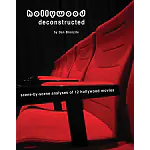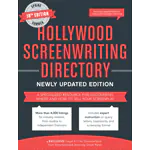Tag: screenwriter
Script Studio® Screenwriting Software App Wins Xojo Design Award
May 1, 2019 (London, UK) – UK technology company Nuvotech is awarded the 2019 Xojo Design Award of “Best Vertical Market App” for its popular creative writing software Script…
Nuvotech Releases Script Studio® Creative Writing Software For Mac & PC
August 28, 2017 (London, UK) – UK technology company Nuvotech announces release of Script Studio® creative writing software. An Innovative Mac & Windows Program For Screenwriters, Playwrights and Novelists.…
Structure Vs Free-Form Script Writing
Screenwriters, novice and pro, will inevitably have their own contrasting methodologies for writing a screenplay and you will often hear conflicting rules to adhere to from prominent screenwriting gurus…
The Selfless Hero
When we think of a hero in a movie we immediately assume we are talking about the central character otherwise known as the Protagonist, but many stories conceal a…
Nuvotech teams with the Dysfunctional Screenwriters Society
PHILADELPHIA, PA – The Dysfunctional Screenwriters Society has teamed with UK technology company Nuvotech, publisher of popular screenwriting software Movie Outline 3, to award winners of Power of the…
Get Into Your Scene Late and Out Early
As a screenwriter it is important to remember that while the stories we tell should reflect real-life (or aspects of it) in order to engage an audience and help…
The Power of the Flashback
Flashback can be a clever device or it can be an annoying one. If you use it sparingly and don't rely on it too heavily to tell your story…
Remember the Golden “Rule of Three” for Writing
I know some of you writers out there – yes, you know who you are -- don’t like rules and formulas and are ruthlessly resistant to following any kind…
Vary your Movie Script Locations
In your everyday life, do you sit in one spot and talk to everybody you meet in that same place? Okay, maybe you do but unless that’s the point…



